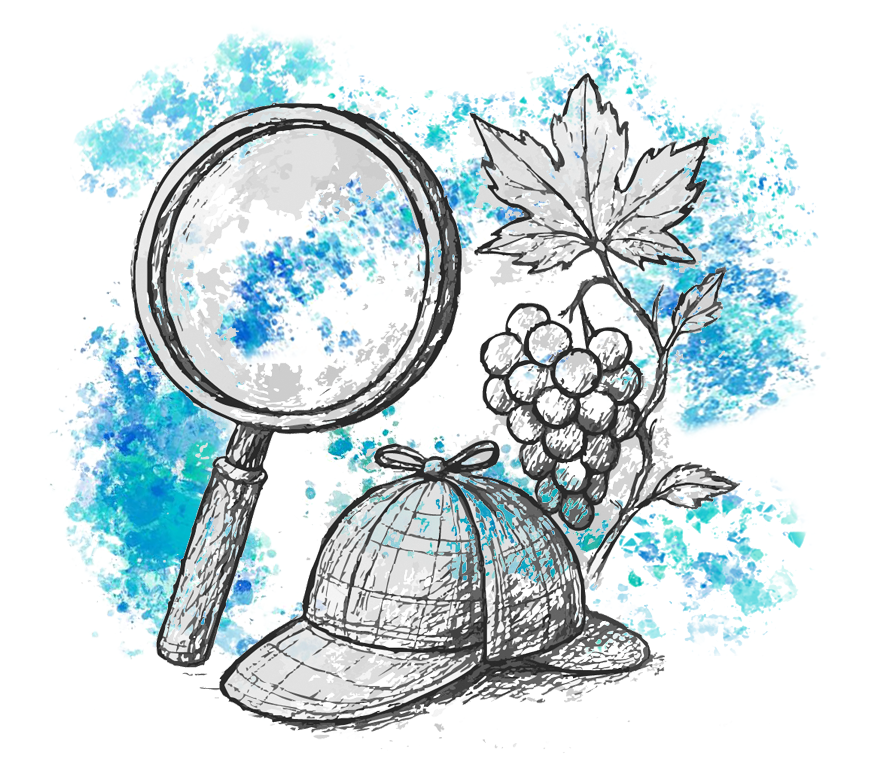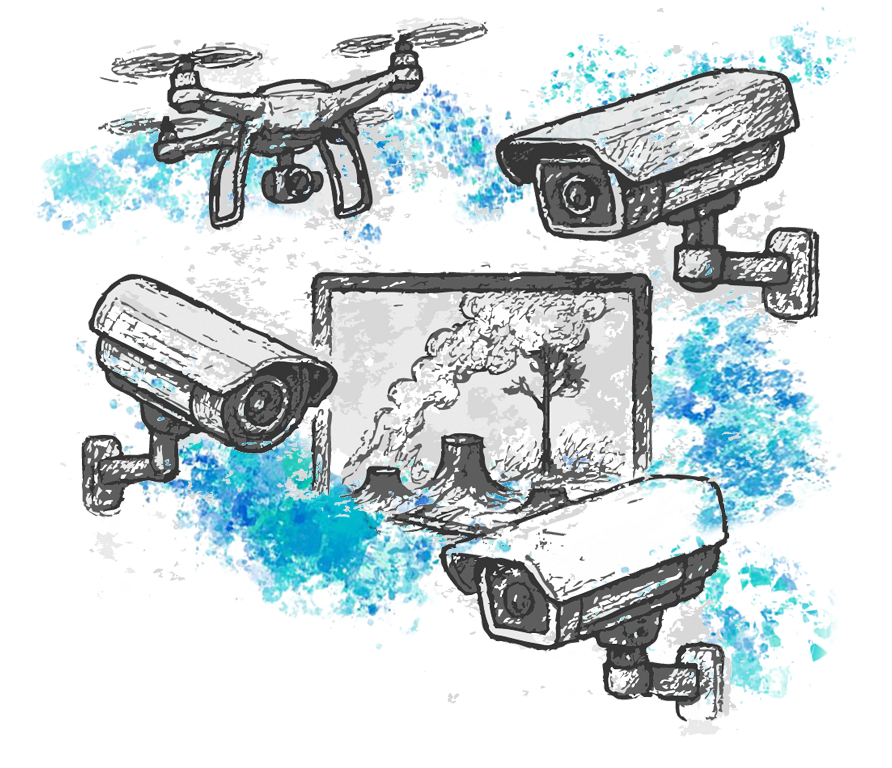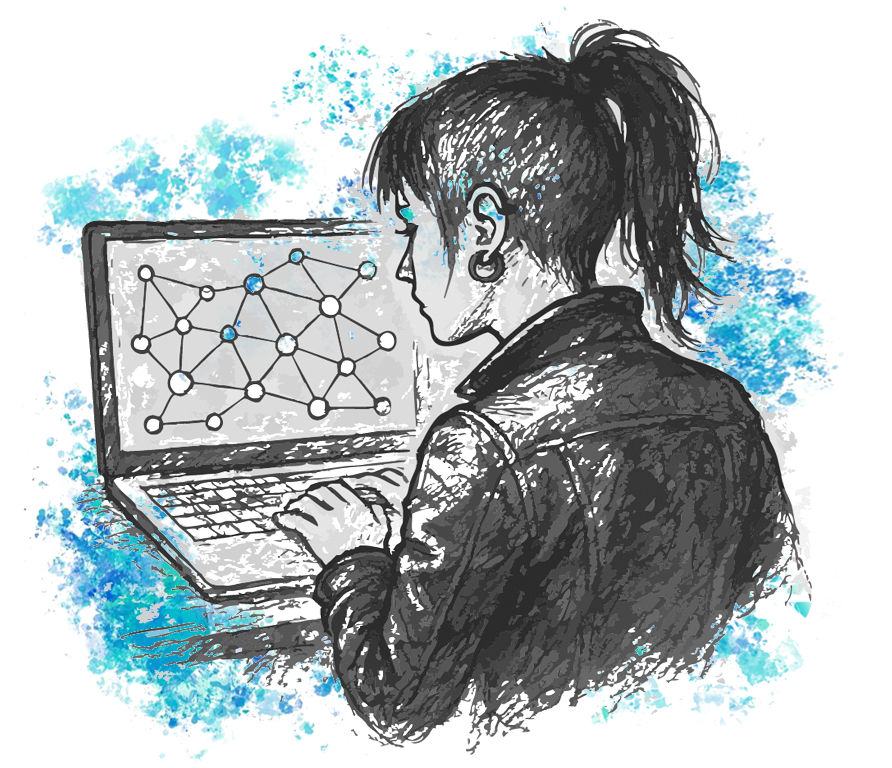What do Sherlock Holmes, Erin Brockovich and Lisbeth Salander have in common with INESC TEC researchers? In fiction, these characters rely on deductive reasoning and attention to detail to solve complex crimes. In the real world, technology is increasingly taking on that role. At INESC TEC, sensors, traceability algorithms, and artificial intelligence are now used to analyse food supply chains, identify suspicious patterns, and detect hidden environmental violations. And there is no shortage of reasons to act. The 2023 annual report from the Alert and Cooperation Network (ACN) recorded 758 notifications of suspected food fraud, a 26% increase compared to the previous year. Meanwhile, environmental crime is now considered one of the most profitable criminal activities globally, with Europol estimating its value between €110 and €281 billion per year.
From the Asprela campus in Porto to the world, we follow INESC TEC’s research into these two areas.
Do we know what we’re consuming?
We live in an age where food travels long distances before reaching our tables – and it’s along this journey that fraud can occur: false labelling, altered origins, swapped ingredients, or products that are not what they claim to be. In 2013, news broke that several supermarkets in the UK were selling horse meat as beef in products like burgers. In 2016, Portugal’s Food and Economic Safety Authority (ASAE) seized seven tonnes of grapes and five thousand litres of must from a goods vehicle for attempting to introduce grapes into a demarcated region without any origin documentation. More recently, inspections have aimed to ensure wine authenticity. In December 2024, ASAE dismantled a fraudulent scheme in the districts of Aveiro and Bragança, where over 16,500 litres of cooking oil were wrongly labelled as olive oil.
When we think about detecting food fraud, we tend to imagine lab tests, police work or inspections by authorities. But what if there were technology capable of tracking production processes and detecting fraud even before it happens? In the stories of Sir Arthur Conan Doyle, Sherlock Holmes had Dr Watson to help him unravel mysteries. At INESC TEC, we have our own WATSON – the technological partner of researchers in the fight against food fraud. This European project combines cutting-edge technologies such as blockchain, artificial intelligence, sensors and geolocation systems, all of which can be used at different points of a product’s value chain. Each country is testing a pilot focused on a specific product: wine in Portugal, honey in Spain, olive oil in Greece, meat in Germany, dairy in Finland and fish in Norway.
Pedro Carvalho, one of the INESC TEC researchers involved in the project, explains that, at present, it’s impossible to fully cover the entire value chain of a product due to its complexity, the anti-fraud mechanisms already in place, and the need for progressive digitalisation. That’s why WATSON aims to use technology to improve the security of value chains and, as a result, increase consumer trust – one step at a time.
Tell me where you’re going, and I’ll tell you if there’s fraud

“We don’t want to replace the current methodologies food safety authorities use. For instance, in the Portuguese use case, our focus is on tracing the product from vineyard to wine production. We’ve installed sensors in the vineyard that monitor grape growth in terms of environmental conditions – measuring temperature, humidity, and acidity. We also track the harvest, following the grapes from the moment they’re picked until they reach the winery,” explains the researcher.
This monitoring of the grape’s journey provides information that can help detect potential fraud, such as mixing grapes from different sources. Did the transport truck deviate from its route? Did it stop for too long? Was there a spike in the temperature of the transported product? That’s when we start analysing the inconsistencies.
“When certain patterns are identified in the data, an early warning system alerts the authorities. In the future, this technology could also be used for long-haul transport – from producer to retailer,” adds Pedro Carvalho.
Technology serving safety and inclusion
Over the past decade, European consumers have become increasingly aware of the origin of the products they consume and the environmental practices involved in their production and transport. This is reflected in the value given to information that ensures authenticity and sustainability – traceability, production methods and environmental concerns. According to the 2022 Eurobarometer, 91% of Europeans consider it essential for the Common Agricultural Policy (CAP) to ensure the sustainable management of natural resources. “The technology we’ve developed can help answer many consumer concerns and build trust in products. Combined with other data stored on a blockchain platform, we can aggregate different types of information. One of the project’s partners is even working on a digital product passport based on this data,” says the researcher. Pedro Carvalho goes further: “According to studies by the European Blind Union, there are more than 30 million people with visual impairments in Europe, including partial or total blindness. We can use traceability data and labelling apps to provide information to blind people, supporting their social inclusion. It’s a different way of contributing to food safety.”
Ultimately, WATSON wants to offer accessible and reliable technologies that can be easily adopted across different value chains. “It will be a gradual process, as we can’t yet fully control a value chain from beginning to end.” At least… for now.
The Erin Brockovich of modern times
EMERITUS has a clear mission: to use technology to fight environmental crime that threatens our ecosystems and public health. This project brings together researchers, authorities and experts from various fields to develop advanced digital tools that help identify, predict and prevent environmental offences such as illegal dumping, soil and water pollution, or unlawful industrial activities.
The Portuguese pilot is based in the Sado estuary – a sensitive area rich in biodiversity yet vulnerable to environmental pressures. João Gama, an INESC TEC researcher, uses algorithms to solve crimes… without leaving his computer. How? “We’ve developed tools that analyse satellite images to detect, for instance, illegal landfills. The Alentejo Regional Coordination and Development Commission receives complaints of suspected landfill creation and sends us the coordinates. We extract satellite images – for example, via Google Earth – and use algorithms trained specifically to detect illegal waste sites to analyse those images and confirm or dismiss the complaint. If confirmed, the next step is to inform the relevant authorities.”

João Gama adds that other technologies are being tested in other pilots. In Málaga, specific cameras with video analysis and thermal sensors are used to identify illegal pollutant discharges into the Guadalhorce River. In Turin, the focus is on monitoring urban areas at environmental risk using satellite data, drones and virtual sensors. In Romania, monitoring technologies are used to detect and prevent illegal waste transport across borders. In Moldova, efforts focus on identifying illicit disposal waste sites across large areas using satellite and drone imagery.
“We have a powerful combination of technologies – sensors, satellite images, artificial intelligence – capable of detecting early signs of contamination, mapping risk patterns and helping authorities make fast, informed decisions. It’s essentially an environmental intelligence system,” says the researcher.
EMERITUS is developing a modular, open platform that integrates these tools and can be adapted to different geographical and legal contexts. This means that, beyond the pilots, the solutions are being designed for broader application.
If Erin Brockovich had had access to this technology in the 1990s, she wouldn’t have spent months gathering door-to-door testimonies. She could have logged into the platform and cross-checked environmental data, satellite imagery, and real-time sensors, and the Hinkley case would been solved much faster.
Algorithms that reveal the truth
João Gama highlights other European projects tackling environmental issues, such as PERIVALLON, which offers a comprehensive view of organised environmental crime and develops practical tools to detect and prevent it.
“Many of the projects we’re developing are aligned with the European Union’s principles in the fight against environmental crime, rooted in science and technology. But the truth is we could do much more. There are high-resolution images of the Earth’s surface that could be shared with researchers who have the tools to analyse them. We could apply EMERITUS technology to detect plastics in the ocean or monitor the illegal export of hazardous waste from Europe to Africa, for instance.”
This integrated approach – which turns scattered data into concrete actions to protect our natural heritage – is also the foundation of the EnSafe project (Enhancing Environmental Protection: Anomaly Detection in Waste Transportation using Network Science). Led by INESC TEC, the project uses network science, artificial intelligence, and large-scale data analysis to detect abnormal or suspicious behaviours in waste transport chains, which are particularly vulnerable to fraud, corruption, and environmental crime.
“We access the transaction records and build a network. In that network, we identify the most critical nodes with the highest risk of irregularity. For example, companies that sell more waste than they receive, or others that don’t receive any but still sell,” João Gama explains.
EnSafe tackles the problem “in the shadows”, just like Lisbeth Salander, the heroine of the Millennium saga. Both navigate complex networks, uncover hidden patterns in data and expose suspicious behaviours that would otherwise go unnoticed.

Fraud detection is, in fact, in INESC TEC’s DNA. Very recently, our algorithms were used by a company to detect falsified elements in documents. “Take an insurance document where someone changes the date after the expired policy. That’s a forgery – and our algorithms can detect it quickly and reliably, far more efficiently than a person manually checking documents one by one,” says the researcher.
We may not be the NCIS you see in American films and series. Still, here in Asprela, we’re also helping to fight crime – putting technology at the service of the authorities and the public to prevent fraud and protect things like our food supply chains and the environment. So why not be a little bit NCIS Asprela, too?



 News, current topics, curiosities and so much more about INESC TEC and its community!
News, current topics, curiosities and so much more about INESC TEC and its community!